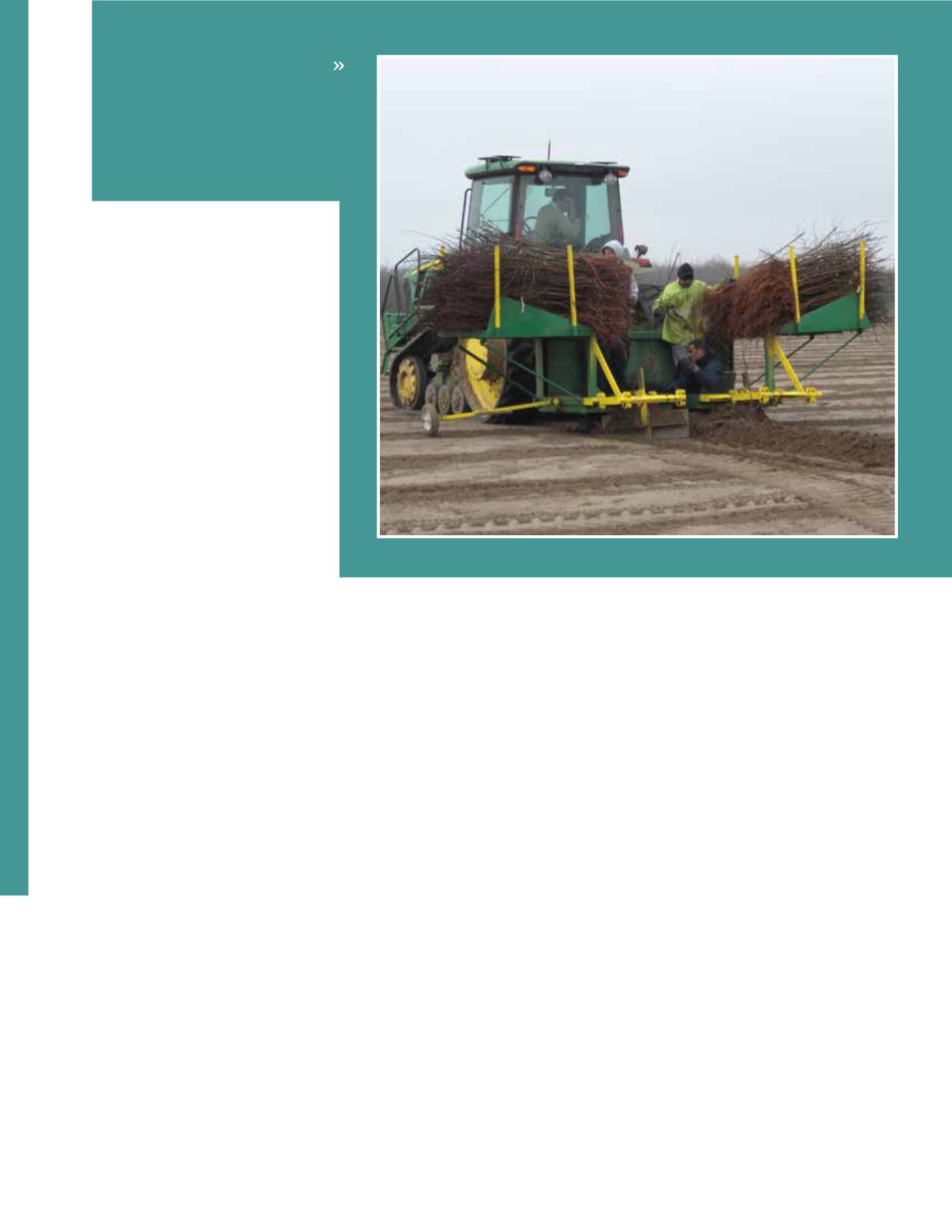
TIME TO CONSIDER
38
Almond Facts
JANUARY | FEBRUARY 2016
of the treatments has been
shown to outperform either
material sprayed alone.
Interestingly, zinc applied
alone was not found to increase
yields. Other trials have
found limited to no benefits
from the application of other
micronutrients at bloom.
Be Careful
with Bees
There has been a lot of concern
about honeybee health related
to fungicide and insecticide
applications within orchards.
More is being learned every
year about the impacts of
pest management practices on hive health. Recently,
The Almond Board of California released an excellent
resource titled “Honey Bee Best Management Practices
for California Almonds
/
pollination).” This resource provides an overview of the
research conducted and the recommendations generated
from the results and conclusions.
The following is a brief overview of these practices
that are associated with insect and disease control
around bloom:
• Read the pesticide label carefully – including
surfactants – and avoid any chemicals that indicate
toxicity to bees.
• Avoid applying or tank mixing any insecticides
during bloom until the effects on bees are known.
• Avoid the fungicides iprodione, captan, or ziram.
These fungicides negatively impact bee hive health.
• Apply fungicides later in the afternoon or evening
when bees and pollen are less present. It is also
important to not spray too late that the fungicide
does not have a chance to dry before the next
foraging day.
• Addition of adjuvants is not needed unless specified
by the fungicide label. These compounds may
harm bees by increasing fungicide activity.
• Cover or remove the bees’ water source and avoid
spraying the hive directly with any pesticides.
Bacterial Spot Management
Bacterial spot is a new bacterial disease of almond in
California that is caused by
Xanthomonas arboricola
pv.
pruni
. The disease mainly occurs on cultivar ‘Fritz’ in the
mid- to northern almond production areas of California
and commonly develops on fruit. The pathogen primarily
overwinters on diseased mummified fruit and infection
periods are during warm, wet conditions during the spring
as fruit and leaves develop. Results from this past season
indicate that the most effective management program
for bacterial spot includes a delayed dormant ( January)
bactericide (e.g., copper-mancozeb) application to reduce
inoculum and at least one in-season application around
rainfall events and rising temperatures (e.g., mid- to
late March) to prevent new infections. In a wet spring,
additional in-season applications may be needed to protect
developing fruit. Most fixed-copper products and copper-
When planting trees, consider the
soil type, weather, and rainfall.
Fine textured, wet soils can create
issues with planting, require
tanking, and may not be feasible for
machine planting. Sunny conditions
can dry out roots of trees if laid out
too far in advance.


